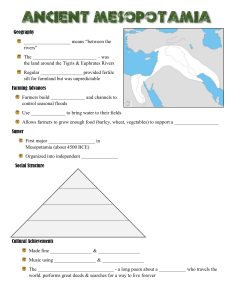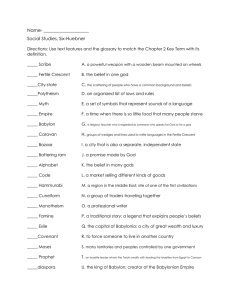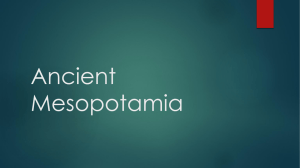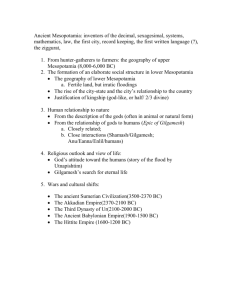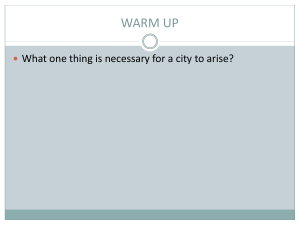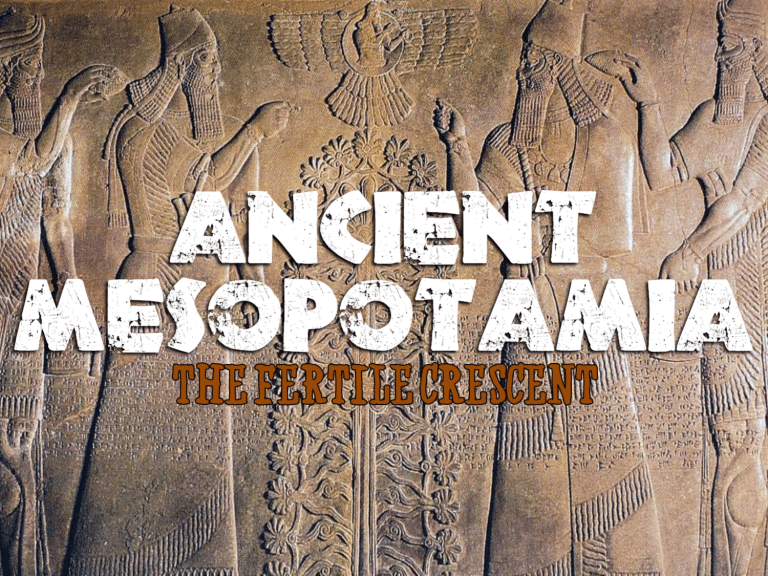
© Students of History - http://www.teacherspayteachers.com/Store/Students-Of-History • Mesopotamia means “between the rivers” • The Fertile Crescent – was the land around the Tigris & Euphrates Rivers • Regular flooding provided fertile silt for farmland but • Farmers build dams and channels to control seasonal floods • Use irrigation to bring water to their fields • Allows farmers to grow enough food (barley, wheat, vegetables) to support a large population lukerosa@gmail.com • First major civilization in Mesopotamia (about 4,500 BCE) • Organized into independent citystates lukerosa@gmail.com Rulers & priests Merchants, artists, scribes Peasant farmers Captured slaves • Made fine jewelry & sculptures • Music using flutes & strings • The Epic of Gilgamesh - a long poem about a king who travels the world, performs great deeds & searches for a way to live forever • Polytheistic: belief in many gods • Theocracy – religious leaders also lead government • Ziggurat: large pyramid-like temple at city’s center • Pictographic writing system called cuneiform • Wedge-shapes • Uses symbols for pictures, sounds & ideas • Written on clay tablets lukerosa@gmail.com • Used basic math & geometry based on 60 (60 minute hour; 360° circle) • First to use wheeled carts for transportation • Sumerians overtaken by Akkadians around 2270 BCE • Around 1900, the Assyrians rise to power • Later, the Babylonians lukerosa@gmail.com take control of Mesopotamia • Babylonian King from 1792 to 1750 BCE • Controls all of Mesopotamia • Known for Hammurabi’s Code – 1st written code of laws • “An eye for an eye” • Assyrian Empire rises again before the NeoBabylonian or Chaldean Empire comes to power • King Nebuchadnezzar has the great Hanging Gardens of Babylon built • • Founded in the 6th Century BCE by Cyrus the Great Becomes the largest empire the world had seen Printable map for the Fertile Crescent and each empire.

